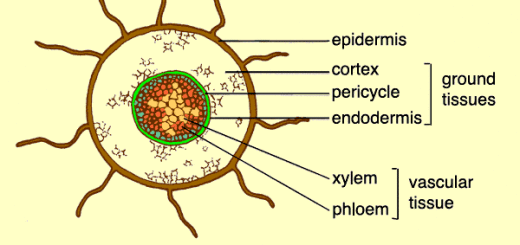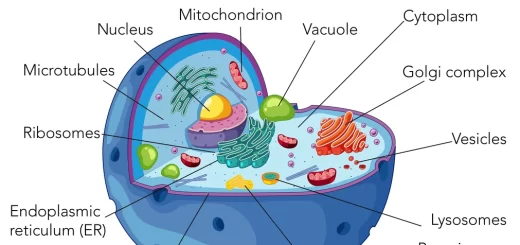Taxonomy, Species, Living organisms diversity and principles of their classification
There are many examples of living organisms such as animals, plants & micro-organisms, Living organisms must be classified due to the enormous diversity in living organisms species, so they must be classified into groups to facilitate their studying, We can distinguish between banana plant & molukhiyah plant because banana plant carries large-sized leaves, while molukhiyah plant carries small-sized leaves.
Diversity of living organisms
Diversity of animals
When you pay a visit to the zoo, you may observe the variety among animals in a lot of different characteristics such as the size, the shape, the way of feeding and the environment, where animals live.
The size: Big animals such as elephants and rhinoceros, Small animals such as rabbits, rats & lizards.
The environment, where animals live: Animals live in water such as fish, crocodiles & hippopotami, Animals live on land such as horses, dogs and lions.
Diversity of plants
Plants are different from each other in many characteristics such as the length, the size of the leaves.
- The length: Huge trees such as camphor and palm trees, short weeds such as clover and gargeer.
- The size of the leaves: Plants carry large-sized leaves such as banana plant, Plants carry small-sized leaves such as molukhiyah plant.
Diversity of micro-organisms
Micro-organisms are living organisms that can’t be seen by the naked eye, but they spread everywhere around us (in air, water & soil), Micro-organisms exist in pond water and can be seen only by the microscope.
To examine a drop of stagnant pond water, Put a drop of pond water on the glass slide, then add a drop of methylene blue solution to it and cover it gently with the glass coverslip, put the glass slide on the microscope stage and use the objective lens to examine the sample, repeat the sample examination by using the higher power objective lens.
You will notice many living-organisms, most of them are unicellular organisms, such as amoeba, euglena & paramecium, micro-organisms differ from each other in shape & way of movement, Amoeba, euglena & paramecium are classified as micro-organisms because they are unicellular organisms that can be seen only by the microscope.
Classification of living organisms
Due to the enormous diversity in living organisms species, they must be classified into groups to facilitate their study, the science which is responsible for that is known as Taxonomy, Taxonomy is a branch of biology that searches for the similarities & the differences among living organisms and it places similar ones in groups according to a certain system in order to ease their study.
Plans of classification of living organisms
- Classification of plants according to the external shape & the way of reproduction.
- Classification of animals according to the nature of body support, the number of legs in arthropods and the number of teeth in mammals.
Classification of plants
Classification of plants according to the external shape (appearance) into:
- Some plants can’t be distinguished into roots, stems & leaves such as Algae (green, red and brown algae).
- Most of the plants are distinguished into roots, stems and leaves such as maize (corn), wheat, palms & camphor plants.
Classification of plants according to their way of reproduction into:
- Plants reproduce by the formation of spores (Ferns): Ferns are small terrestrial plants that reproduce by spores such as vougheir & adiantum.
- Plants reproduce by formation of seeds such as Gymnosperms and Angiosperms:
Gymnosperms: their seeds are formed inside cones and not inside a pericarp (fruit envelope) such as pine plants and cycas plants.
Angiosperms (flowering plants): Their seeds are formed inside a pericarp, they are divided into monocotyledon plants such as maize plants and wheat plants, and dicotyledon plants such as bean plants and pea plants.
Adiantum plant is classified as a fern plant because it is considered a small terrestrial plant that reproduces by the formation of spores, Cycas is a gymnosperm plant because its seeds are formed inside cones & not inside a pericarp (fruit envelope), Pea & wheat plants are angiosperms plants because their seeds are formed inside a pericarp.
Classifications of animals
Classification of animals according to the nature of body supporting:
- Animals with soft bodies: their bodies don’t have support such as jellyfish, octopus & earthworm.
- Animals with supported bodies are divided according to the location of the support into animals with external support such as mussels and snails, and animals with internal support such as vertebrates (animals which have vertebral column) such as fishes, reptiles, birds & mammals.
Some animals are characterized by the presence of internal support & external support such as aquatic turtles, The body of jellyfish & octopus is soft because their bodies don’t support.
Classification of arthropods according to the number of legs:
Arthropods are invertebrate animals that are characterized by the presence of jointed legs, Arthropods are classified according to the number of legs into:
- Insects are characterized by the presence of three pairs of jointed legs such as ants, locusts, bees, mosquitoes, flies and cockroaches.
- Arachnids are characterized by the presence of four pairs of jointed legs such as spiders & scorpions.
- Myriapods are characterized by the presence of numerous legs such as scolopendra & Julius.
Spider (or scorpions) isn’t considered insects because it has four pairs of jointed legs, while insects have three pairs of jointed legs, Cockroach & locusts are classified as insects because they are arthropods that have three pairs of jointed legs.
Spiders & scorpions belong to arachnids because they are arthropods that have four pairs of jointed legs, Scolopendra & Julius are classified as myriapods because they have numerous legs.
Classification of mammals according to the presence of teeth
Edentates (Teethless mammals) such as sloth and armadillos, Mammals having teeth are divided according to the shape, the kind & the number of teeth into:
- Animals that have front teeth extending outwards to capture insects such as Hedgehog.
- Animals that have pointed canines & molars with sharp projections such as lions, tigers, foxes and dogs.
- The animals which have sharp incisors, they are divided according to the number of incisors in each jaw into, Rodents have one pair of incisors in each jaw such as rat, jerboa & squirrel, Lagomorphs have two pairs of incisors in the upper jaw and one pair in the lower jaw such as rabbits.
Sloths and armadillos are classified as edentate animals because they have no teeth, The front teeth of hedgehogs extend outwards to capture insects.
Rat (or squirrel) is from rodents, while the rabbit is from lagomorphs because rat (or squirrel) has one pair of incisors in each jaw, but the rabbit has two pairs of incisors in the upper jaw and one pair in the lower jaw.
The individuals of the same species differ in some external characteristics because each of them has its specific shape, the cat can’t mate with rabbits because cats & rabbits are from different two species.
Natural classification of living organisms
Linnaeus used the species as a fundamental unit of the natural classifying system, Species is the basic classification unit for living organisms, Species is a group of more similar living organisms in shape that can reproduce to give birth of new fertile individuals, that can reproduce & keep the existence of the species.
The African, European and Asian humans whatever their colour, race or home are also belong to one species (Human), It is possible to produce a fertile individual by mating of an African man with an Asian woman because both of them are from the same kind.
Application on classification
Although cats differ from each other, they differ more than rabbits and dogs, so, it is impossible for cats to mate with rabbits or rabbits with dogs or dogs with cats if mating occurs, the produced offspring is sterile. Mating can take place between any couple of cats or dogs or rabbits whatever the difference in shape or size and the produced offspring is fertile from the same kind.
So, all cats are placed in one species, while the rabbits are classified in another different species and so dogs, Intercourse may happen between some of the coupled (associated) species, but the product offspring is sterile (barren), Example: The intercourse between a donkey & a horse produces a sterile female called Mule because both are from two different kinds.
Modern classification of living organisms, Kingdom (Monera and Protista)
Principles of living organisms classification and Taxonomic hierarchy
General characteristics of Kingdom Fungi and Kingdom Plantae



